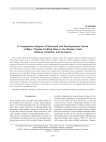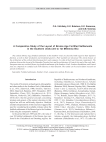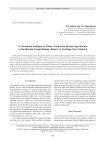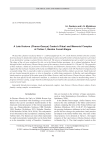The metal ages and medieval period. Рубрика в журнале - Archaeology, Ethnology & Anthropology of Eurasia
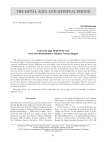
A Bronze Age shaft-hole axe from the northwestern Baraba forest-steppe
Статья научная
This study introduces a crested shaft-hole axe found on the southern shore of Lake Maidan, Vengerovsky District, Novosibirsk Region. Such random finds are regarded as markers of Bronze Age landscape zones and transportation routes in southwestern Siberia. Shaft-hole axes with slight crests occurred on this territory from the mid to late 2nd millennium BC. In addition to such axes, several casting molds made of clay, stone or metal have been found, possibly suggesting that axes were not only imported but also manufactured locally. These random finds of shaft hole axes can be considered markers of the complex, mirroring not only Middle and Late Bronze Age distribution areas, but also a considerable northward shift of landscape borders during an episode of climatic change, as well as indicating key routes for the migration of people associated with various traditions and objects. The mapping of various subtypes of shaft-hole axes from the Baraba forest-steppe revealed one such route, leading northward from southwestern Siberia to the Vasyugan Swamp. Apart from the series of axes from Baraba, certain cemeteries, such as Stary Tartas-4, yielded miniature replicas used as personal adornments. This feature links the north of the western part of the axes' distribution area (the forest-steppe zone of the Ob-Irtysh watershed) with its eastern part – the Minusinsk Basin.
Бесплатно

A Bronze Age site on the northern coast of West Java
Статья научная
This study describes an early site on the northern coast of West Java, affected by the Austronesian culture—Subanglarang near Binong in the Subang Regency. Geologically, during the 2000–1000 BP interval, it was part of the coastline of the northern coast of West Java, situated more than 5 m asl. During the 2013 surveys and excavations in 2016 and 2018, five burials were revealed. On the basis of the fragments of red-slipped pottery, pickaxes, beads of various shape and size, and metal weapons, the site is dated to the Bronze Age. Artifacts similar to those of early Austronesians were discovered. The analysis of various beads from Subanglarang attests to trade relations with other areas. Further excavations on the northern coast of West Java will hopefully shed more light on the life of the Bronze Age people of that area.
Бесплатно
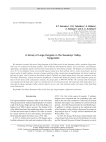
A Group of Large Kurgans in the Suusamyr Valley, Kyrgyzstan
Статья научная
We introduce recently discovered large kurgans of the Saka period in the Suusamyr valley, northern Kyrgyzstan. There are two cemeteries with large mounds, each of which is surrounded by ditches, stone enclosures, and ramparts. Apparently, each kurgan and the constructions around it form a whole burial complex. The kurgans are rounded in plan view, 30–73 m in diameter. Some were possibly square in plan view. West of them, there is a line of enclosures, most of which consist of eight boulders. In terms of nature and form of the constructions around kurgans, the burial complexes fall into six types, each of which is described in detail. Parallels are found among Early Iron Age cemeteries in the Tian Shan, Semirechye, central and eastern Kazakhstan. Common and distinctive features of the Suusamyr group are listed. On the basis of the comparative analysis, the group dates to 800/700–200 BC. We conclude that the kurgans were destined for the Saka elite, and were constructed over several generations. The materials of the study allow us to state that the alpine Suusamyr valley, which is hard to access, was a key political and/or cult center of the Tian Shan in the Saka period.
Бесплатно

A New Andronovo (Fedorovka) Cemetery in the Eastern Irtysh Basin
Статья научная
We present the results of a multidisciplinary study of an Andronovo (Fedorovka) cemetery, Pogorelka-2, situated east of the Irtysh. Three burial mounds are described in detail, and elements of the funerary rite are outlined. All the mounds were constructed according to a single plan, characterized by a spatial separation of the burial platform, whereby one or several burials are surrounded by depressions in the ground. In two kurgans, these are four ditches with slightly sloping outer walls and steep inner ones. These ditches surround subsquare platforms with burials in the center. In the third kurgan, instead of ditches, there are small elongated pits. All the burials at Pogorelka-2 are cremations, as is typical of the Andronovo (Fedorovka) cemeteries in Baraba. On each burial platform, 1–3 burials were situated. Ceramics and other grave goods are described. Despite some specific features, they are typical of the Andronovo tradition. The cemetery belongs to the eastern part of the Andronovo (Fedorovka) distribution area. The analysis of funerary practices and goods reveals no contacts with the aboriginal Late Krotovo population.
Бесплатно

A Set of Clothing Items from the Iyus Hoard
Статья научная
This stud y focuses on details of clothing, belonging to the Iyus hoard, incidentally found in Khakassia in the 1970s. As in most other hoards from southwestern Siberia, this one includes elements of belt sets—buckles, plaques, pendants, and rings, paralleled by similar artifacts associated with the Tes culture of the 2nd century BC to 2nd century AD. The context of the ornaments is described, and the assembly and ritual use of belt sets are reconstructed. The composition of the Iyus hoard mirrors the process of a new Xiongnu clothing tradition being adopted by native south Siberians in their ritual and everyday practices. The “Scythian” component of the Iyus hoard is represented by rarities—ancient artifacts worn by natives in later times, and by replicas of ancient ornaments, whereas the “Xiongnu” component was more adaptive and includes items commonly used in everyday life. The co-occurrence of “Scythian” and “Xiongnu” artifacts within the same ritual assemblage testifies to the symbolic use of belt sets, evidenced by mid-1st millennium BC sites in southern Siberia.
Бесплатно

A dugout from the Don river exhibited at the State historical museum, Moscow: discovery and dating
Статья
Бесплатно

A functional analysis of lithics of the Early Iron Age Yankovsky culture: new findings
Статья научная
We present the results of a functional analysis of lithics of the Yankovsky culture (800 BC to the turn of the millennium) from two sites–Cherepakha-7 and Solontsovaya-2, excavated over large areas during salvage works in 2015 and 2017, respectively. Such tools are traditionally described as axes, adzes, chisels, knives, spearheads, and projectile points. Certain findings of the functional analysis disagree with this classification. The question arises of the correspondence between formal typological and traceological criteria. For functional analysis, the so-called Keeley method, or High Power Approach, was used, along with the classification of polishing types, elaborated at Tohoku University (Japan). Functions of 28 of the 62 tools selected for high-precision functional analysis were assessed. The existing nomenclature of woodworking tool types is clarified, information on the technique of harvesting herbaceous plants and on leatherworking tools is significantly specified. More details are provided on tools involved in bone carving, as well as those used to open shells of bivalve mollusks. The High Power Approach has enhanced our understanding of the functions of stone tools, which, despite the use of metals, were basic in Yankovsky technologies. Further directions of traceological studies are suggested.
Бесплатно

A half of a metal bipartite mold of the Seima-Turbino period from the Upper Irtysh region
Статья обзорная
Бесплатно
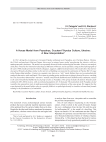
A house model from Popudnya, Cucuteni-Tripolye culture, Ukraine: a new interpretation
Статья
Бесплатно

A late 16th to early 17th century Mongolian ceremonial helmet from the Moscow Kremlin Armoury
Статья обзорная
Бесплатно
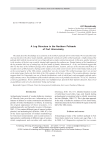
A log structure in the northern palisade of Fort Umrevinsky
Статья научная
The study describes the findings of excavations at the northern palisade of Fort Umrevinsky. We revealed the basis of a log structure with a floor made of planks, adjoining the central part of the northern palisade. A tight joining of the palisade ditch with the two preserved rows of logs indicates a single construction episode. At this area, another entrance to the territory of the fort was revealed, situated right opposite the southern one. Design features of the foundation of the log structure (the way of cutting logs, the floor made of planks), dimensions (6 × 6 m), and location suggest that this was the base of the northern passage tower. Spatial structure, location, and size of the structure match those of wooden towers of Siberian forts. During earlier studies at one of the corner towers of Fort Umrevinsky, built as early as the second quarter of the 18th century, a plank floor was also revealed. The northern passage tower was erected at the initial stage (before the first third of the 18th century) of the fort's existence. This wooden defensive structure suggests that Fort Umrevinsky was one of border fortifications, each of which had a sub-rectangular palisade and a single entrance tower. The foundation of the northern entrance tower was probably described in 1741 by J.G. Gmelin as a ruin of a guardhouse. Towers of Siberian forts were multifunctional. Apart from their defensive function, they served as guardhouses and were also destined for living and storage.
Бесплатно





